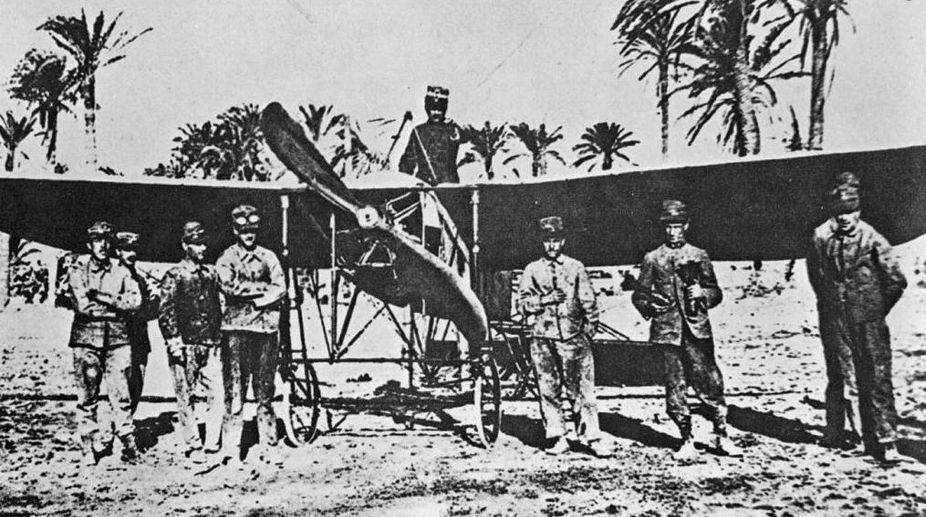Cutting Red Tape
Transformative technological innovations of the twenty-first century have changed the way business is done the world over.

The French Revolution led newfangled leaders of France to look into balloons (unpowered aerostats) as strategic weapons to discern enemy operations.
Hence, aerostats found its use for the first time in 1794 when French Aerostatic Corps was established to conduct research work on aerial reconnaissance. Jean-Marie-Joseph Coutelle developed a reconnaissance aerostat L’Entreprenant which was decisively used for aerial observation during the Battle of Fleurus later that year, having a demoralising effect on the enemy troops, ultimately leading to the triumph of France.
Advertisement
With the advent of photography, cameras were fitted in aerostats and put into practice by Gaspar Felix Tournachon, who photographed the houses of Petit-Becetre (a French village) from a tethered hot-air balloon in 1858.
Advertisement
With the invention of powered airplanes by Wright brothers, the task of taking cameras into the skies was made much easier, around 1909, during which time a reconnaissance monoplane named Rumpler Taube also emerged, sometimes attributed as the ‘world’s first stealth aircraft’ because it became very difficult for ground-based observers to spot a flying Taube at an altitude above 400 meters. With the outbreak of the First World War, experts perceived reconnaissance as the only practical use of the airplanes due to the awful vulnerabilities of tethered balloons and kites, and also due to the trench deadlock in the Western Front.
There are instances where aerial reconnaissance changed the very course of the war like when German General Alexander von Kluck’s army gearing up to surround the British Expeditionary Force was thwarted by the pilots’ report, thereby saving the lives of 100,000 soldiers. Germany had the scientific lead as they developed the world’s first aerial camera for reconnaissance but the French led the way with aerial reconnaissance, incorporating several squadrons and developing pioneering camera that enabled flight commanders to get prints of the photographs very quickly. Britain, however, lagged far behind and didn’t pick up before 1915, when the British Reconnaissance aircrafts during the Battle of Neuve Chapelle photographed German trenches. Italy and Russia also played significant roles as they deployed some of the best aircrafts for reconnaissance purposes and by 1916; heavier-than-air aircrafts were a regular practice along respective fronts.
Reconnaissance concepts matured during the First World War from a zero baseline as both sides learnt the importance of aerial photography that ultimately led to the development of reconnaissance aircrafts, playing a pivotal role in the World War II. During the inter-war years, though strategic aerial reconnaissance began to develop, battlefield observation gained a higher pedestal. In 1938, General Werner von Fritsch, commander-in-chief of the German Army, rightfully anticipated that “the military organisation which has the best reconnaissance unit will win the next war”.
Germany’s Luftwaffe began the World War II with an efficient aerial reconnaissance and photographic interpretation system but as the war progressed, their system wasn’t developed.
On other hand, Britain, who was lagging so far, brought about significant revolution in aerial intelligence that changed the very course of war. They developed electric heating system for aerial cameras that enabled reconnaissance aircrafts to click pictures from high altitudes without freezing. Soviet Union and Japan, although had no advanced aerial reconnaissance resources, they mainly relied on visual observation and reporting from the battlefield.
Seeing the advancement of Britain, USA started to develop air reconnaissance concepts, leading to a revolutionary growth during World War II, when innovative technologies emerged, making aerial reconnaissance a pivotal role in airpower. With the dawn of the Cold War, aerial reconnaissance became a high-priority integrant of national security for both blocs, leading to the development of highly modernised and strategic reconnaissance aircrafts. USA started aerial reconnaissance projects where photo-reconnaissance balloons were used to gather photographic electronic intelligence, leading to more than forty reconnaissance aircrafts being shot down by the Soviet Union.
In modern times, reconnaissance aircrafts are widely used by government agencies and military forces for airspace surveillance, intelligence gathering, battlefield surveillance, observation, fishery protection and border patrol.
With the proliferation of strategic aircraft technologies, fighter jets and Unmanned Aerial Vehicle (UAV), the task of military surveillance to snoop on foreign powers in air has become easier. Today’s fighter jets can gather a plethora of information using an array of sensors installed inside them and can also take stereoscopic images. UAVs like Sky Sentinel have revolutionised the task of aerial surveillance, as their main benefit is endurance.
Thus, future generation aerial surveillance vehicles will have more stealthy attributes which will make them harder to detect and will mainly rely on jet engines rather than propellers to get out of danger zone rapidly.
Class XII, Don Bosco School, Bandel
Advertisement